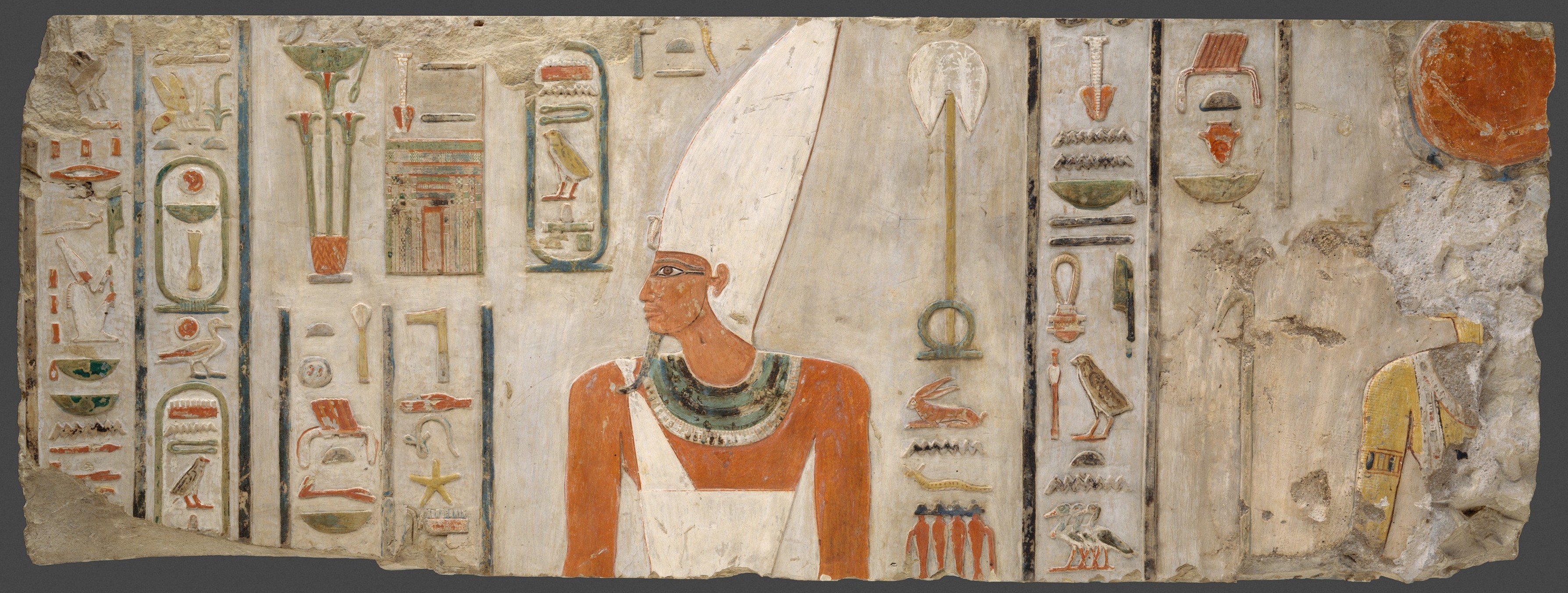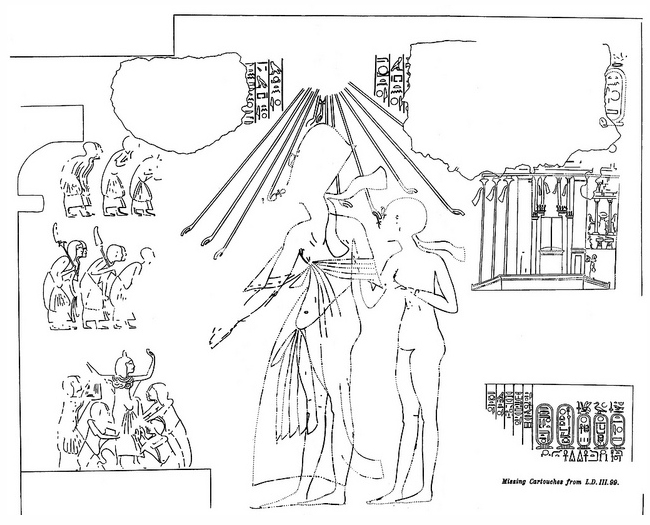|
Josef W. Wegner
Josef William Wegner (born October 1967) is an American Egyptologist, archaeologist and Professor in Egyptology at the department of Near Eastern Languages and Civilizations of the University of Pennsylvania, where he obtained his Ph.D. degree in Egyptology in 1996. He specializes in Egyptian Middle Kingdom archaeology (circa 2050-1650BCE). His father is the astrophysicist, Gary A. Wegner. He is noted for his continued research at Abydos, where he excavated the tomb of pharaoh Sobekhotep IV in 2013 and discovered that of Pharaoh Seneb Kay in 2014.Discovery of the tomb and nomen of the pharaoh on the Luxor Times. Later, he excavated an entire royal necropolis dating to the |
University Of Pennsylvania
The University of Pennsylvania (Penn or UPenn) is a Private university, private Ivy League research university in Philadelphia, Pennsylvania, United States. One of nine colonial colleges, it was chartered in 1755 through the efforts of founder and first president Benjamin Franklin, who had advocated for an educational institution that trained leaders in academia, commerce, and public service. The university has four undergraduate schools and 12 graduate and professional schools. Schools enrolling undergraduates include the College of Arts and Sciences, the University of Pennsylvania School of Engineering and Applied Science, School of Engineering and Applied Science, the Wharton School, and the University of Pennsylvania School of Nursing, School of Nursing. Among its graduate schools are its University of Pennsylvania Law School, law school, whose first professor, James Wilson (Founding Father), James Wilson, helped write the Constitution of the United States, U.S. Cons ... [...More Info...] [...Related Items...] OR: [Wikipedia] [Google] [Baidu] |
Second Intermediate Period
The Second Intermediate Period dates from 1700 to 1550 BC. It marks a period when ancient Egypt was divided into smaller dynasties for a second time, between the end of the Middle Kingdom and the start of the New Kingdom. The concept of a Second Intermediate Period generally includes the 13th through to the 17th dynasties, however there is no universal agreement in Egyptology about how to define the period. It is best known as the period when the Hyksos people of West Asia established the 15th Dynasty and ruled from Avaris, which, according to Manetho's '' Aegyptiaca'', was founded by a king by the name of Salitis. The settling of these people may have occurred peacefully, although later recounts of Manetho portray the Hyksos "as violent conquerors and oppressors of Egypt". The Turin King List from the time of Ramesses II remains the primary source for understanding the chronology and political history of the Second Intermediate Period, along with studying the typology of ... [...More Info...] [...Related Items...] OR: [Wikipedia] [Google] [Baidu] |
American Egyptologists
American(s) may refer to: * American, something of, from, or related to the United States of America, commonly known as the "United States" or "America" ** Americans, citizens and nationals of the United States of America ** American ancestry, people who self-identify their ancestry as "American" ** American English, the set of varieties of the English language native to the United States ** Native Americans in the United States, indigenous peoples of the United States * American, something of, from, or related to the Americas, also known as "America" ** Indigenous peoples of the Americas * American (word), for analysis and history of the meanings in various contexts Organizations * American Airlines, U.S.-based airline headquartered in Fort Worth, Texas * American Athletic Conference, an American college athletic conference * American Recordings (record label), a record label that was previously known as Def American * American University, in Washington, D.C. Sports teams S ... [...More Info...] [...Related Items...] OR: [Wikipedia] [Google] [Baidu] |
Graduate Group In The Art And Archaeology Of The Mediterranean World
The Graduate Group in the Art and Archaeology of the Mediterranean World (AAMW) is an interdisciplinary program for research and teaching of archaeology, particularly archaeology and art of the ancient Mediterranean (Greece and Rome), Egypt, Anatolia, and the Near East, based in the Penn Museum of the University of Pennsylvania. History Doctoral work in Mediterranean and Near Eastern Archaeology has been a feature of the University of Pennsylvania since 1898, largely in response to the excavations undertaken by the Penn Museum. Nearly 200 dissertations in Old World Archaeology and Art have been produced at Penn in the course of the last century. The eminent archaeologist Rodney Young, the director of the Penn Museum's excavations at Gordion that uncovered the royal tomb of King Midas, strengthened the graduate program during the 1960s and 1970s. Core faculty The current Chair of the Program is Thomas F. Tartaron. Other notable faculty include Philip P. Betancourt, Lothar Hasel ... [...More Info...] [...Related Items...] OR: [Wikipedia] [Google] [Baidu] |
David P
David (; , "beloved one") was a king of ancient Israel and Judah and the third king of the United Monarchy, according to the Hebrew Bible and Old Testament. The Tel Dan stele, an Aramaic-inscribed stone erected by a king of Aram-Damascus in the late 9th/early 8th centuries BCE to commemorate a victory over two enemy kings, contains the phrase (), which is translated as " House of David" by most scholars. The Mesha Stele, erected by King Mesha of Moab in the 9th century BCE, may also refer to the "House of David", although this is disputed. According to Jewish works such as the '' Seder Olam Rabbah'', '' Seder Olam Zutta'', and ''Sefer ha-Qabbalah'' (all written over a thousand years later), David ascended the throne as the king of Judah in 885 BCE. Apart from this, all that is known of David comes from biblical literature, the historicity of which has been extensively challenged,Writing and Rewriting the Story of Solomon in Ancient Israel; by Isaac Kalimi; page 32; ... [...More Info...] [...Related Items...] OR: [Wikipedia] [Google] [Baidu] |
Middle Kingdom Of Egypt
The Middle Kingdom of Egypt (also known as The Period of Reunification) is the period in the history of ancient Egypt following a period of political division known as the First Intermediate Period of Egypt, First Intermediate Period. The Middle Kingdom lasted from approximately 2040 to 1782 BC, stretching from the reunification of Egypt under the reign of Mentuhotep II in the Eleventh Dynasty of Egypt, Eleventh Dynasty to the end of the Twelfth Dynasty of Egypt, Twelfth Dynasty. The kings of the Eleventh Dynasty ruled from Thebes, Egypt, Thebes and the kings of the Twelfth Dynasty ruled from Lisht, el-Lisht. The Periodization of ancient Egypt, concept of the Middle Kingdom as one of three golden ages was coined in 1845 by German Egyptologist Christian Charles Josias von Bunsen, Baron von Bunsen, and its definition evolved significantly throughout the 19th and 20th centuries. Some scholars also include the Thirteenth Dynasty of Egypt wholly into this period, in which case the Mi ... [...More Info...] [...Related Items...] OR: [Wikipedia] [Google] [Baidu] |
University Of Pennsylvania Museum Of Archaeology And Anthropology
The Penn Museum is an archaeology and anthropology museum at the University of Pennsylvania. It is located on Penn's campus in the University City neighborhood of Philadelphia, at the intersection of 33rd and South Streets. Housing over 1.3 million artifacts, the museum features one of the most comprehensive collections of Middle and Near-Eastern art in the world. History The Penn Museum, originally called the "University of Pennsylvania Museum of Archaeology and Anthropology", was founded in 1887 following a successful archaeological expedition to the ancient site of Nippur in modern-day Iraq (then part of the Ottoman Empire). Provost William Pepper persuaded the trustees of the University of Pennsylvania to erect a fireproof building to house artifacts from the excavation. During the late 19th and early 20th centuries, North American and European museums regularly sponsored such excavations throughout the Mediterranean and Near East, sharing the ownership of their discoverie ... [...More Info...] [...Related Items...] OR: [Wikipedia] [Google] [Baidu] |
Akhenaten
Akhenaten (pronounced ), also spelled Akhenaton or Echnaton ( ''ʾŪḫə-nə-yātəy'', , meaning 'Effective for the Aten'), was an ancient Egyptian pharaoh reigning or 1351–1334 BC, the tenth ruler of the Eighteenth Dynasty of Egypt, Eighteenth Dynasty. Before the fifth year of his reign, he was known as Amenhotep IV (, meaning "Amun is satisfied", Hellenized as ''Amenophis IV''). As a pharaoh, Akhenaten is noted for abandoning traditional ancient Egyptian religion of polytheism and introducing Atenism, or worship centered around Aten. The views of Egyptologists differ as to whether the religious policy was absolutely monotheism, monotheistic, or whether it was monolatristic, religious syncretism, syncretistic, or henotheistic. This culture shift away from traditional religion was reversed after his death. Akhenaten's monuments were dismantled and hidden, his statues were destroyed, and his name Damnatio memoriae, excluded from regnal list, lists of rulers compiled by lat ... [...More Info...] [...Related Items...] OR: [Wikipedia] [Google] [Baidu] |
Meritaten
Meritaten, also spelled Merytaten, Meritaton or Meryetaten () (14th century BC), was an ancient Egyptian royal woman of the Eighteenth Dynasty of Egypt. Her name means "She who is beloved of Aten"; Aten being the sun-deity whom her father, Pharaoh Akhenaten, worshipped. She held several titles, performing official roles for her father and becoming the Great Royal Wife to Pharaoh Smenkhkare, who may have been a brother or son of Akhenaten. Meritaten also may have served as pharaoh in her own right under the name Ankhkheperure Neferneferuaten.J. Tyldesley, ''Chronicle of the Queens of Egypt'', 2006, Thames & Hudson, pg 136–137 Family Meritaten was the first of six daughters born to Pharaoh Akhenaten and his Great Royal Wife, Nefertiti. Her sisters are Meketaten, Ankhesenpaaten, Neferneferuaten Tasherit, Neferneferure, and Setepenre. Meritaten is mentioned in diplomatic letters, by the name ''Mayati''. She is mentioned in a letter from Abimilki of Tyre. The reference usually ... [...More Info...] [...Related Items...] OR: [Wikipedia] [Google] [Baidu] |
Abydos Dynasty
The Abydos Dynasty is hypothesized to have been a short-lived local dynasty ruling over parts of Middle and Upper Egypt during the Second Intermediate Period in Ancient Egypt. The Abydos Dynasty would have been contemporaneous with the Fifteenth and Sixteenth Dynasties, from approximately 1650 to 1600 BC. It would have been based in or around Abydos and its royal necropolis might have been located at the foot of the ''Mountain of Anubis'', a hill resembling a pyramid in the Abydene desert, close to a rock-cut tomb built for pharaoh Senusret III. Debate over existence Evidence in favor The existence of an Abydos Dynasty was first proposed by Detlef Franke and later elaborated on by Kim Ryholt in 1997. Ryholt observes that two attested kings of this period, Wepwawetemsaf (''Wepwawet is his protection'') and Pantjeny (''He of Thinis''), bore names in connection with Abydos: Wepwawet being an important Abydene god and Thinis being a prominent city, located a few miles north ... [...More Info...] [...Related Items...] OR: [Wikipedia] [Google] [Baidu] |
Sixteenth Dynasty Of Egypt
The Sixteenth Dynasty of ancient Egypt (notated Dynasty XVI) was a dynasty of pharaohs that ruled the Theban region in Upper Egypt for 70 years. This dynasty, together with the 15th Dynasty, 15th and 17th Dynasty, 17th dynasties, are often combined under the group title, Second Intermediate Period (c. 1650–1550 BC), a period that saw the division of Upper and Lower Egypt between the pharaohs at Thebes, Egypt, Thebes and the Hyksos kings of the 15th Dynasty based at Avaris. Identification Of the two chief versions of Manetho's ''Aegyptiaca'', the Sixteenth Dynasty is described by the more reliable Sextus Julius Africanus, Africanus (supported by George Syncellus, Syncellus) as "shepherd [''hyksos''] kings", but by Eusebius of Caesarea, Eusebius as Thebes, Egypt, Theban. Kim Ryholt, Ryholt (1997), followed by Bourriau (2003), in reconstructing the Turin King List, Turin canon, interpreted a list of Thebes-based kings to constitute Manetho's Sixteenth Dynasty, although this is o ... [...More Info...] [...Related Items...] OR: [Wikipedia] [Google] [Baidu] |
NBC News
NBC News is the news division of the American broadcast television network NBC. The division operates under NBCUniversal Media Group, a division of NBCUniversal, which is itself a subsidiary of Comcast. The news division's various operations report to the president of NBC News, Rebecca Blumenstein. The NBCUniversal News Group also comprises MSNBC, the network's 24-hour liberal cable news channel, as well as business and consumer news channels CNBC and CNBC World, the Spanish language and United Kingdom-based Sky News. NBC News aired the first regularly scheduled news program in American broadcast television history on February 21, 1940. The group's broadcasts are produced and aired from 30 Rockefeller Plaza, NBCUl's headquarters in New York City. The division presides over the flagship evening newscast ''NBC Nightly News'', the world's first of its genre morning television program, ''Today (American TV program), Today'', and the longest-running television series in American hi ... [...More Info...] [...Related Items...] OR: [Wikipedia] [Google] [Baidu] |








